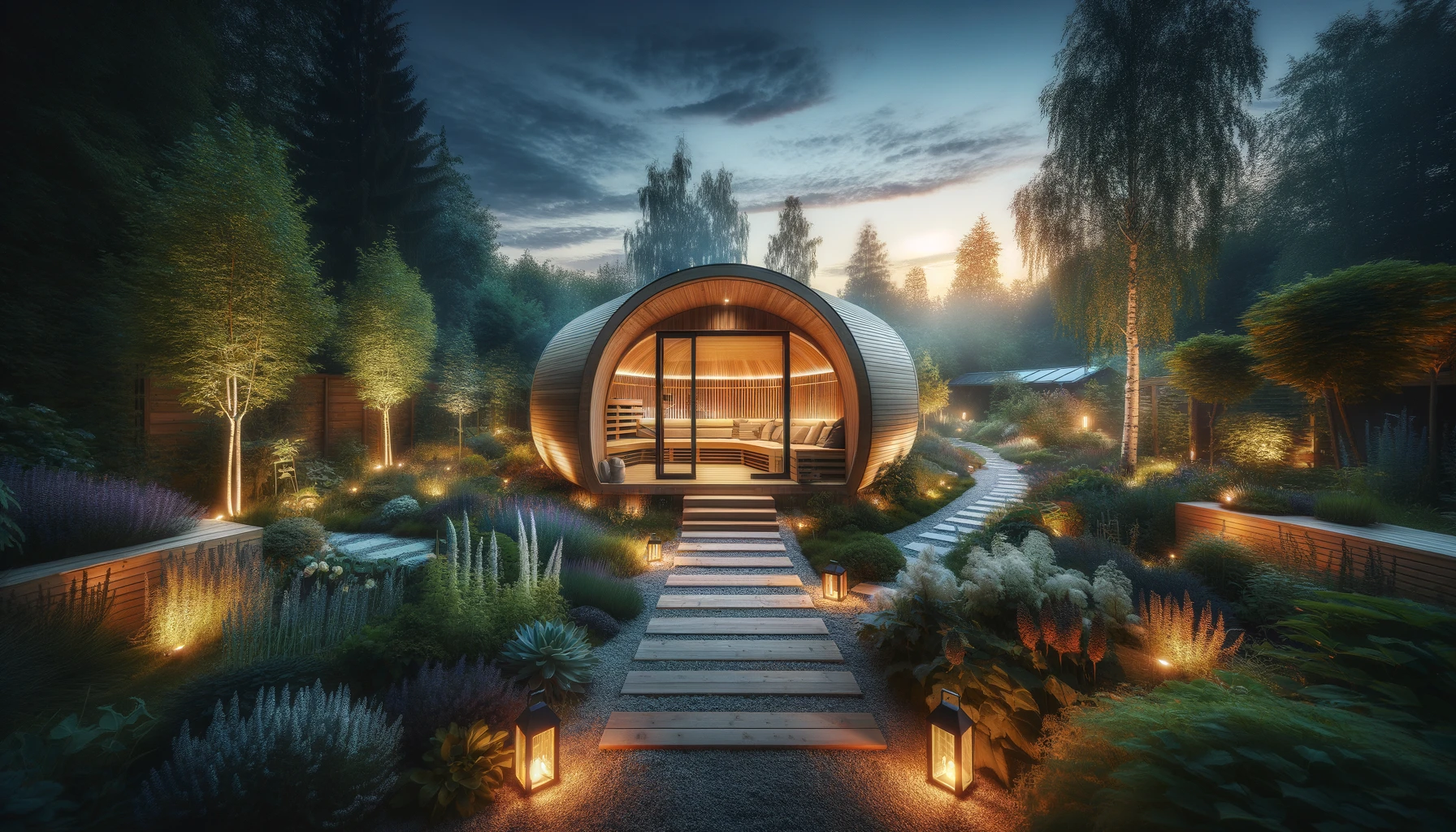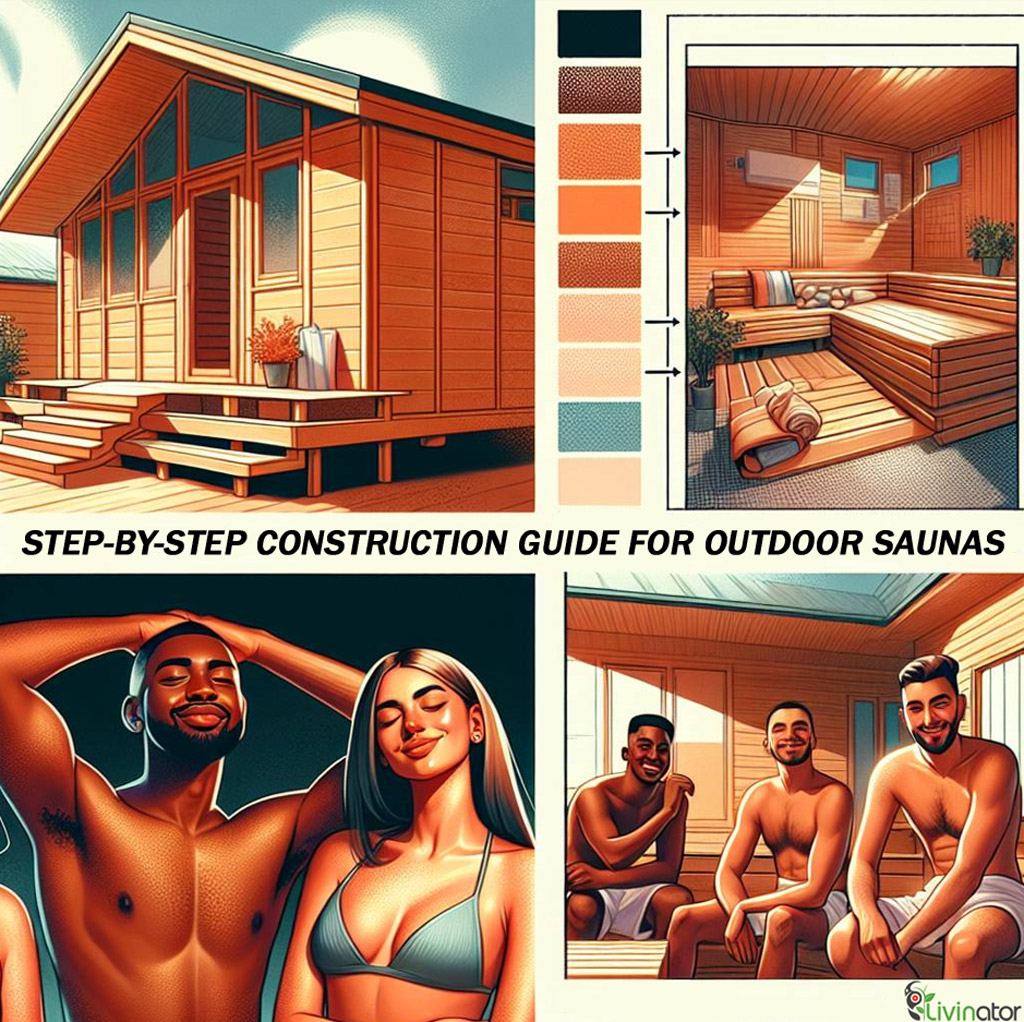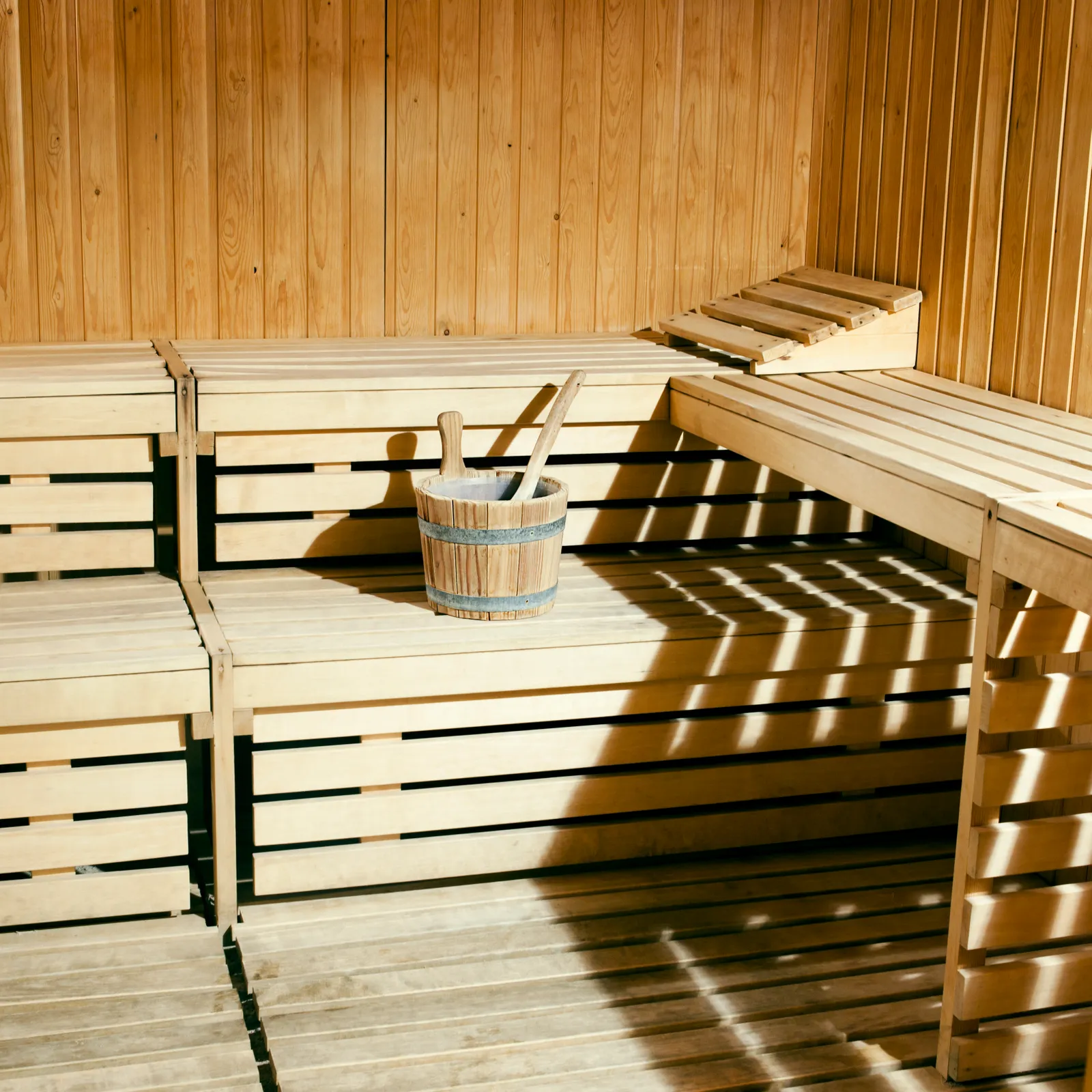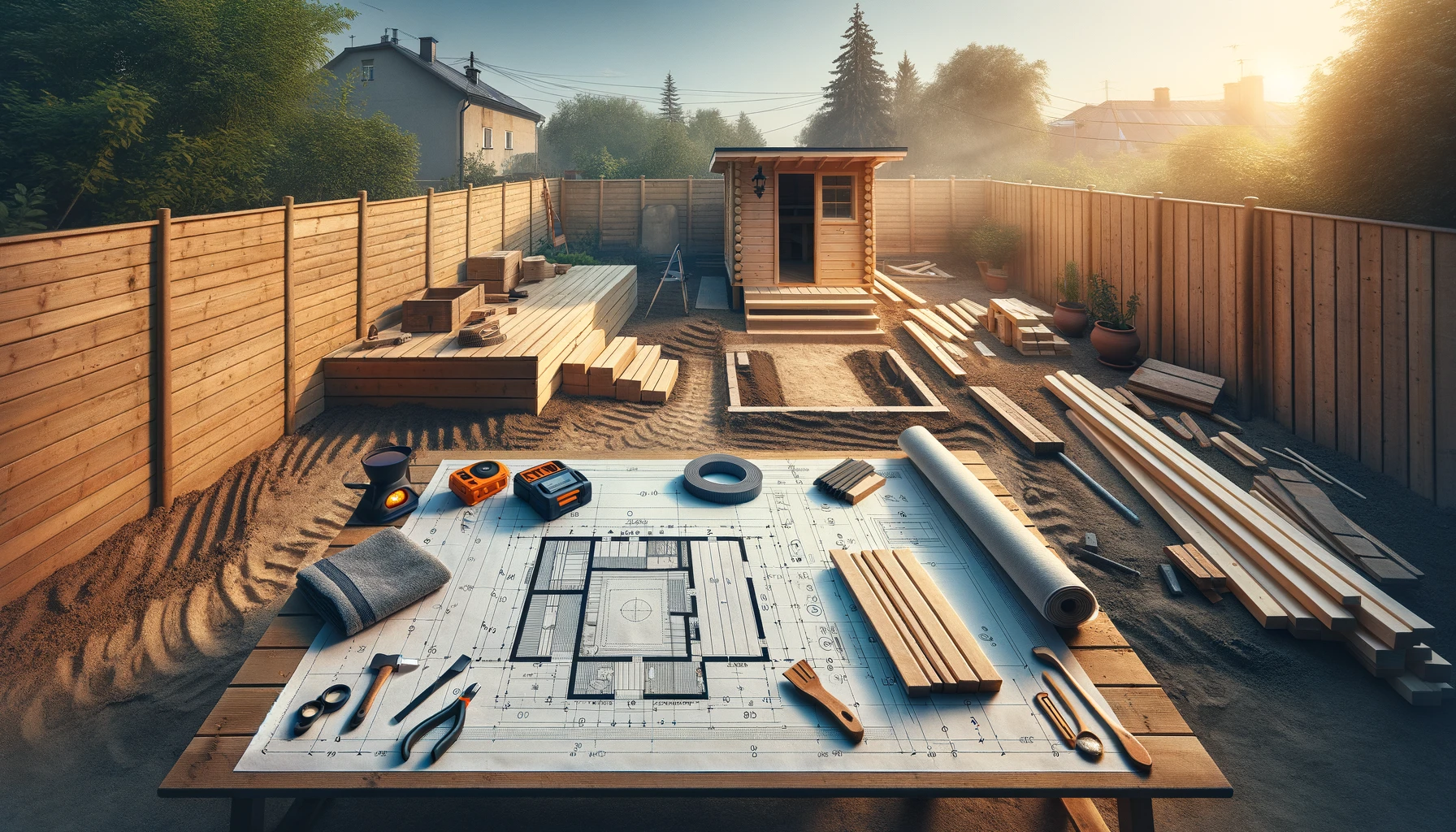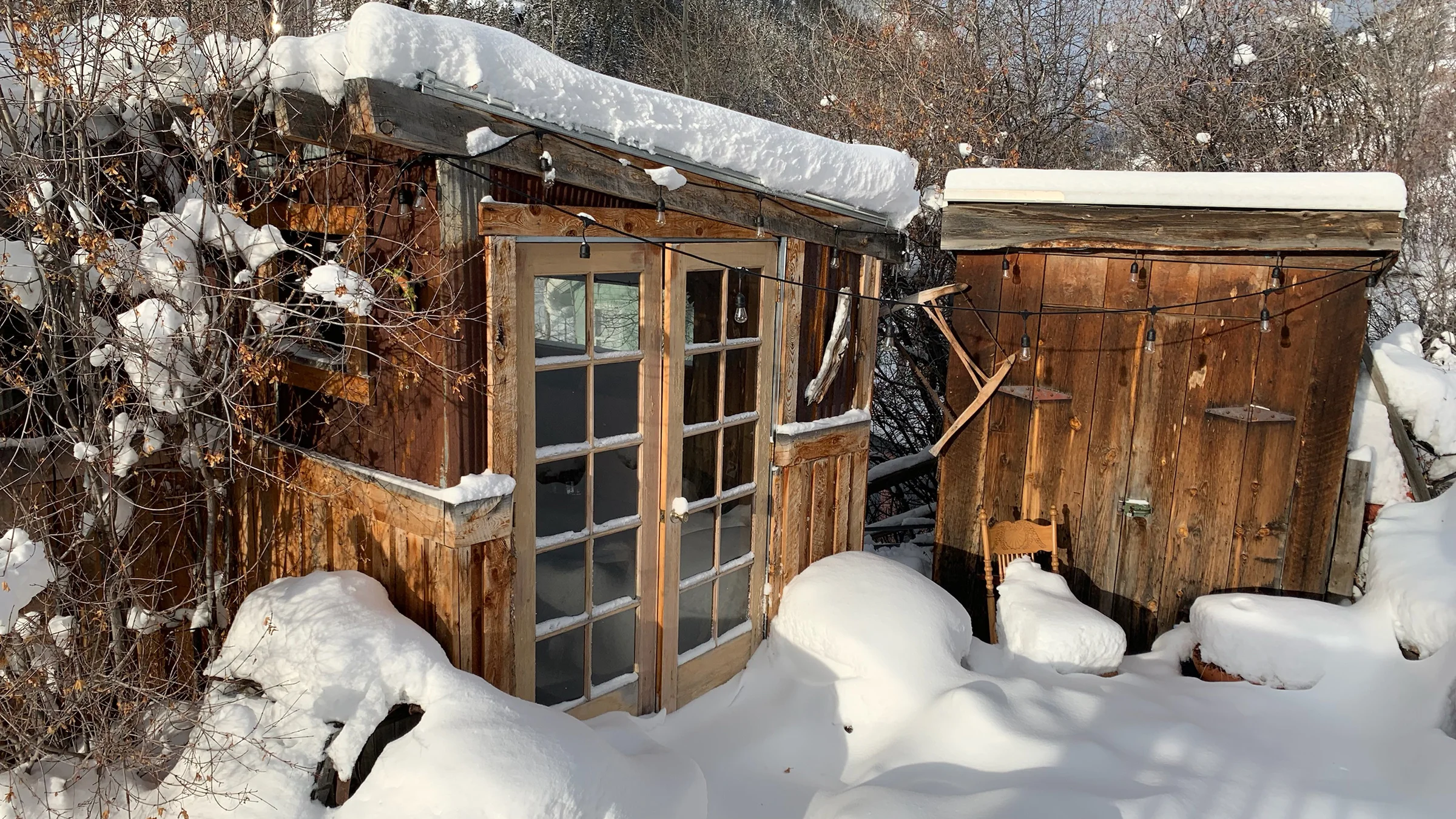Navigating the world of backyard sauna construction requires a keen understanding of building permits and regulations. While the allure of a personal oasis beckons, the complexities of adhering to local codes can be daunting. From zoning laws dictating where your sanctuary can stand to safety requirements ensuring relaxation without risk, these regulations form an essential framework for your project’s success. Balancing creativity with compliance is key when transforming your backyard into a serene escape. So, before you break ground on your dream retreat outbuilding, let’s dive into the crucial considerations surrounding backyard sauna building permits and regulations.
Key Takeaways
- Understand local regulations and law: Before building a backyard sauna, familiarize yourself with the permits and regulations in your area to avoid any legal issues.
- Plan your sauna carefully: Take time to plan the location, size, and design of your sauna to ensure it meets both your needs, building law, and regulatory requirements.
- Focus on installation essentials: Pay attention to proper insulation, ventilation, electrical requirements, building permit, and building law during the installation process for a safe and efficient sauna.
- Follow compliance steps: Adhere to all building codes and safety standards to guarantee that your sauna meets the necessary regulations.
- Avoid common mistakes: Learn from common pitfalls like improper wiring or inadequate ventilation to prevent costly errors during the sauna construction.
- Enhance your sauna experience: Consider additional features like lighting, seating, or sound systems to create a relaxing and enjoyable sauna environment.
Understanding Regulations
Building a backyard sauna involves adhering to specific regulations to ensure safety and compliance. Building codes, which vary by location, dictate the standards that must be met during construction. Before starting your project, it’s crucial to research and understand the building codes applicable in your area.
Familiarize yourself with the building codes governing structures like saunas in your locality. These codes are designed to guarantee that saunas are constructed safely and meet certain quality standards. By following these regulations, you can create a secure environment for enjoying your sauna experience without compromising on safety.
Understanding local zoning laws is essential when planning a backyard sauna. Zoning laws determine if you can construct a sauna on your property and outline any necessary permits or restrictions. Contact your local municipality to inquire about setbacks, height limitations, and other regulations that may apply to building structures in residential areas. Being aware of these laws will help you avoid potential legal issues down the road.
Permit Requirements
Before embarking on constructing a backyard sauna, securing the required permits is paramount. For structural aspects of the project, obtaining structural permits from your local building department is mandatory. These permits certify that your sauna complies with safety standards set by regulatory authorities.
In addition to structural permits, ensuring compliance with electrical requirements is vital for a safe and functional backyard sauna setup. Hiring a licensed electrician guarantees adherence to electrical installation guidelines stipulated by local building codes such as proper grounding techniques and GFCI protection measures.
Planning Your Sauna
Choosing Type
When planning your backyard sauna, it’s crucial to decide on the type that best fits your needs and budget. Traditional wood-burning saunas offer a classic experience with aromatic scents from burning wood. Electric saunas, on the other hand, are easier to install and maintain, providing consistent heat levels. Infrared saunas use infrared light to directly heat the body, offering potential health benefits like improved circulation.
Each type has its own advantages; for example, traditional saunas provide a unique ambiance while electric ones are convenient and easy to control. Infrared saunas are known for their energy efficiency and ability to penetrate deeper into tissues for therapeutic effects.
Pros:
- Traditional: Authentic experience
- Electric: Easy maintenance
- Infrared: Energy-efficient
Cons:
- Traditional: Requires more maintenance
- Electric: Limited temperature range
- Infrared: Higher upfront cost
Location Selection
When choosing a location for your backyard sauna, ensure compliance with local regulations regarding setbacks from property lines or structures. Consider factors like privacy, accessibility, and ventilation requirements during site selection. Adequate space around the sauna is essential for safe operation and proper airflow.
The location should also consider practical aspects such as access to power sources if needed and proximity to water sources if you plan on incorporating showers or baths nearby.
Installation Essentials
Safety Measures
When building a backyard sauna, it’s crucial to prioritize safety. This involves incorporating proper ventilation systems to ensure fresh air circulation, using fire-resistant materials to prevent accidents, and installing emergency exits for quick evacuation if needed. Having carbon monoxide detectors and fire extinguishers on hand adds an extra layer of protection in case of emergencies. Regularly checking and maintaining the sauna is essential to guarantee its continued safe use.
To construct a durable backyard sauna that will stand the test of time, opt for high-quality materials throughout the building process. Choosing materials that are resistant to moisture helps prevent damage over time due to exposure. Furthermore, selecting components that can endure fluctuations in temperature ensures longevity. Investing in quality supplies not only enhances the sauna’s durability but also contributes to a more enjoyable experience for users.
Heating Methods
If you decide on a wood-burning stove for your backyard sauna heating needs, it’s vital to adhere to local regulations and safety standards when selecting one. Ensuring compliance with these guidelines minimizes risks associated with improper installations or malfunctions related to the stove operation. Proper maintenance practices such as regular cleaning help maintain efficient stove performance while reducing potential fire hazards.
Compliance Steps
Securing Permits
Before embarking on building your backyard sauna, it is crucial to secure all the necessary permits and adhere to regulations. Contact your local building department to determine the specific permits required for constructing a sauna on your property. Failure to obtain these permits can result in legal consequences such as fines or even halting construction.
It’s essential to follow the rules set by the authorities when setting up your sauna. For instance, if you’re adding electrical wiring, plumbing, or making structural changes during construction, you will likely need different permits for each aspect of the project. Ensuring compliance with permit requirements guarantees a smooth building process without unexpected interruptions.
Inspector Concerns
During the construction phase of your backyard sauna, expect visits from building inspectors who ensure that everything meets safety standards and regulations. Address any concerns raised by inspectors promptly and make necessary modifications if required. These inspections are vital as they help identify potential issues early on and prevent problems down the line.
Building inspectors play a crucial role in ensuring that all aspects of your backyard sauna meet building codes and safety standards. By cooperating with them and promptly addressing any concerns they raise, you can avoid delays in completing your project. Their oversight helps guarantee that your sauna is not only functional but also safe for use.
Zoning and Planning
Understanding zoning requirements and planning regulations related to constructing a backyard sauna is key before starting any work. Consulting professionals or local authorities will help navigate through these processes smoothly while adhering to all guidelines in place. Proper planning ensures that you comply with all legal requirements throughout the construction phase.
Zoning laws dictate where certain structures can be built within a property based on factors like size, location, and intended use; therefore understanding these laws is critical before beginning construction.
Avoiding Mistakes
Common Pitfalls
When building a backyard sauna, it’s crucial to consider certain aspects to avoid common pitfalls. Improper ventilation can lead to issues like mold growth or discomfort during sauna use. Inadequate insulation may result in heat loss, impacting the sauna’s efficiency. To steer clear of these problems, research and educate yourself on potential challenges that may arise during the construction process. Seeking advice from experienced builders or professionals can provide valuable insights and help you navigate through any obstacles smoothly.
It is essential to be proactive in addressing these common pitfalls as they could lead to costly mistakes down the line if not managed properly.
Consequences Without Permissions
Constructing a backyard sauna without obtaining the necessary permits can have serious consequences. Failure to comply with building codes and regulations may result in legal actions such as fines or penalties. In some cases, non-compliance might even lead to the forced removal of the sauna structure altogether. To prevent facing negative repercussions, it is imperative to follow all procedures required by local authorities when planning and constructing your backyard sauna.
Enhancing Experience
Essential Accessories
It’s crucial to consider essential accessories like benches, lighting, and temperature controls. These accessories play a significant role in enhancing the comfort and functionality of your sauna experience. Opt for accessories specifically designed for saunas as they meet safety requirements, ensuring a user-friendly environment.
To create a cozy atmosphere in your backyard sauna, invest in comfortable benches that provide relaxation during sauna sessions. Proper lighting not only adds ambiance but also ensures visibility inside the sauna. Temperature controls are essential for regulating heat levels based on personal preferences, contributing to an enjoyable user experience. By incorporating these accessories thoughtfully, you can elevate the overall comfort of your backyard sauna setup.
- Comfortable benches enhance relaxation
- Proper lighting adds ambiance and visibility
- Temperature controls regulate heat levels effectively
Additional Features
Exploring additional features is key to customizing your backyard sauna further. Consider options like audio systems or aromatherapy features to personalize your sauna experience according to your preferences. Adding these extra features allows you to tailor the environment to suit your needs while creating a more enjoyable space.
Navigating Local Regulations
Outdoor Saunas
Outdoor saunas are a popular choice for many homeowners due to their unique benefits. They offer easy access to fresh air, allowing you to relax and rejuvenate while enjoying the surrounding nature. When planning an outdoor sauna, it’s crucial to consider factors like weather resistance and privacy. Ensuring your outdoor sauna is properly insulated and protected against the elements will enhance its longevity and efficiency.
Building an outdoor sauna requires adherence to local regulations regarding construction permits. These regulations may vary depending on your location, so it’s essential to research and understand the specific requirements in your area before starting the project. By complying with building codes and obtaining the necessary permits, you can avoid potential fines or legal issues down the line.
Indoor vs Outdoor
Deciding between an indoor or outdoor sauna depends on your personal needs and preferences. Indoor saunas provide convenience as they can be used year-round regardless of weather conditions. On the other hand, outdoor saunas offer a unique connection with nature, allowing you to immerse yourself in a tranquil environment while enjoying the sauna experience.
Factors such as available space, budget constraints, and personal preferences play a significant role in determining whether an indoor or outdoor installation is more suitable for you. Consider how much space you have available in your home for a sauna setup and weigh that against the benefits of having an outdoor retreat where you can unwind amidst nature’s beauty.
Final Preparations
Meeting Electrical Requirements
To ensure your backyard sauna complies with local building codes, it is crucial to meet all electrical requirements. Hiring a licensed electrician is essential for the proper installation of the sauna. This includes ensuring proper grounding, GFCI protection, and adequate wiring are in place.
Implementing safety measures in your backyard sauna is paramount for a secure environment. Prioritize safety by incorporating features like proper ventilation, fire-resistant materials, and emergency exits within the sauna structure. Regularly inspecting and maintaining the sauna ensures that it remains safe for use by preventing potential hazards.
Educating yourself about safety guidelines and best practices when operating a sauna is vital. Understanding how to safely operate the equipment can prevent accidents or injuries from occurring during use.
Step-by-Step Guide
Building Outdoor Sauna
Building an outdoor sauna involves several crucial steps. Firstly, consider factors like location, materials, and insulation. It’s advisable to consult with professionals or experienced builders for proper construction techniques. Following local building codes is essential, so ensure you obtain the necessary permits before starting construction.
When constructing an outdoor sauna in your backyard, focus on choosing a suitable location that provides privacy and easy access to utilities like water and electricity. Select durable materials that can withstand outdoor conditions and prioritize insulation for efficiency. Professionals can guide you through these decisions based on your specific needs.
Permit-Free Sizes
In some areas, smaller-sized saunas may be exempt from permits. Before proceeding with construction, familiarize yourself with the size limitations specified by local regulations to determine if a permit is needed for your project. Keep in mind that even if a permit isn’t required, adhering to other building codes and safety measures remains crucial.
Remember that while smaller-sized saunas might not require permits in certain jurisdictions, it’s still vital to comply with safety standards and regulations set forth by local authorities. By understanding the rules regarding permit-free sizes for backyard saunas, you can plan your project effectively within legal boundaries.
Final Remarks
You’ve now got the lowdown on navigating the maze of regulations, planning, installing, and ensuring compliance for your backyard sauna project. Remember, the key to a successful build is knowledge and preparation. Don’t skip those vital steps! By understanding the rules, mapping out your plan meticulously, and following the installation guidelines to a tee, you’re setting yourself up for a stress-free sauna experience.
So, what are you waiting for? Roll up your sleeves, grab those tools, and get started on creating your dream backyard oasis. With the right approach and attention to detail, you’ll soon be relaxing in your very own sauna retreat. Go on, make it happen!
Frequently Asked Questions
How important is it to understand backyard sauna building regulations before starting the project?
It’s crucial to grasp the regulations to avoid costly mistakes. Regulations dictate everything from location and size requirements to safety standards. Knowing these rules ensures your project complies with local laws and prevents potential fines or delays.
What are some common mistakes people make when installing a backyard sauna?
One common mistake is neglecting proper ventilation, which can lead to mold growth and affect user experience. Another error is improper wiring, posing safety hazards. Ensuring correct installation procedures are followed can prevent such issues and enhance the longevity of your sauna.
Why should I pay attention to compliance steps during my backyard sauna construction?
Compliance steps guarantee that your sauna meets safety standards set by regulatory bodies. Following these steps not only ensures a safe environment for users but also protects you legally in case of accidents or disputes related to the sauna’s construction or operation.
How can I navigate local regulations effectively when planning my backyard sauna project?
Navigating local regulations involves researching zoning laws, permit requirements, and property line restrictions specific to your area. Consulting with local authorities or hiring professionals familiar with these regulations can streamline the process and help you avoid potential setbacks during construction.
What are some key final preparations I should consider before completing my backyard sauna project?
Before finishing your backyard sauna, ensure all electrical connections are secure, test the heating system thoroughly for optimal performance, check for any water leaks or insulation issues, and confirm that all components meet safety standards. These final checks will guarantee a successful completion of your project.

